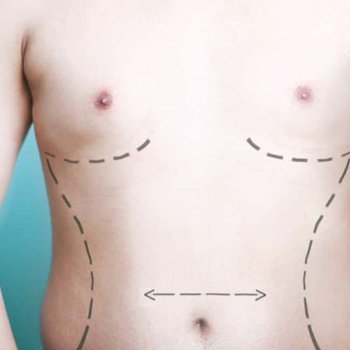Over 5,000 successful surgeries, Highly Experienced Surgeons, Comprehensive Skin & Hair care
Liposuction is a surgical procedure that uses a suction technique to remove fat from specific areas of the body, such as the abdomen, hips, thighs, buttocks, arms or neck. Liposuction also shapes (contours) these areas. Other names for liposuction include lipoplasty and body contouring.

Liposuction isn't typically considered an overall weight-loss method or a weight-loss alternative. If you're overweight, you're likely to lose more weight through diet and exercise or through bariatric procedures - such as gastric bypass surgery - than you would with liposuction.
You may be a candidate for liposuction if you have too much body fat in specific spots but otherwise have a stable body weight.
Liposuction is used to remove fat from areas of the body that haven't responded to diet and exercise, such as the:
In addition, liposuction can sometimes be used for breast reduction or treatment of gynecomastia.
Abdominoplasty or "tummy tuck" is a cosmetic surgery procedure used to make the abdomen thinner and more firm. The surgery involves the removal of excess skin and fat from the middle and lower abdomen in order to tighten the muscle and fascia of the abdominal wall. This type of surgery is usually sought by patients with loose or sagging tissues after pregnancy or major weight loss.

Abdominoplasty operations vary in scope and are frequently subdivided into categories. Depending on the extent of the surgery, a complete abdominoplasty can take from 1 to 5 hours. A partial abdominoplasty (mini-tuck abdominoplasty) can be completed between 1 and 2 hours.
The upper portion of the structure of the nose is bone, and the lower portion is cartilage. Rhinoplasty can change bone, cartilage, skin or all three. Talk with your surgeon about whether rhinoplasty is appropriate for you and what it can achieve.

When planning rhinoplasty, your surgeon will consider your other facial features, the skin on your nose and what you would like to change. If you're a candidate for surgery, your surgeon will develop a customized plan for you.
Sometimes part or all of a rhinoplasty is covered by insurance.
Rhinoplasty can change the size, shape or proportions of your nose. It may be done to repair deformities from an injury, correct a birth defect or improve some breathing difficulties.
As with any major surgery, rhinoplasty carries risks such as:
Breast surgery is performed to enhance the appearance, size, and contour of a woman's breasts. Women consider breast surgery for many different reasons. Some women feel their breasts are too small. Some desire surgery after their breasts change after pregnancy. Others desire to correct an asymmetry in breast size.

Breast surgery is performed with implants (see below) that can be placed under a chest muscle or over a chest muscle. The incision can be placed in the axilla (armpit), areola (the area surrounding the nipple), or lower breast fold. In general, all breast surgeries are minimally invasive procedures. For surgeries in which the incision is made in the armpit, an endoscope (thin tube with a small camera and light) may be used during the procedure.
Breast surgery is a relatively straightforward procedure. As with any surgery, some uncertainty and risk are expected. Know your concerns and expectations. Review the benefits, risks, and alternatives. Seek consultation with a board certified plastic surgeon.
Modern laser augmentation can be done by for interruption from liposuction of body for from unwanted areas.
Reduction mammoplasty (also breast reduction and reduction mammaplasty) is the plastic surgery procedure for reducing the size of large breasts. In a breast reduction surgery for re-establishing a functional bust that is proportionate to the woman's body, the critical corrective consideration is the tissue viability of the nipple–areola complex (NAC), to ensure the functional sensitivity and lactational capability of the breasts. The indications for breast reduction surgery are three-fold – physical, aesthetic, and psychological – the restoration of the bust, of the woman's self-image, and of her mental health.
You don't have to let gynecomastia keep you from feeling your most confident. With the help of a skilled, qualified cosmetic surgeon, you can restore a naturally masculine appearance to your chest. Today's advanced techniques allow for a short surgery, quick recovery, and virtually invisible scars. Learn more about male breast reduction surgery below.

A male breast reduction is the most effective known treatment for gynecomastia, or enlarged male breasts. This cosmetic surgery procedure removes excess fat and glandular tissue to restore a flatter, firmer and more masculine contour to the chest.
Due to genetics, use of certain medications, or other unspecified reasons, some men develop the appearance of enlarged breasts. It is estimated that up to 50% of men in the United States experience some degree of gynecomastia during their lifetime. Gynecomastia can present at any age, and male breast reduction can be performed safely and successfully on teenagers and adult men alike.
Book an appointment and consult our dermatologists & plastic surgeons. Understand the problem and procedures in detail. We believe in giving sufficient time to our patients and help them make the right decision.